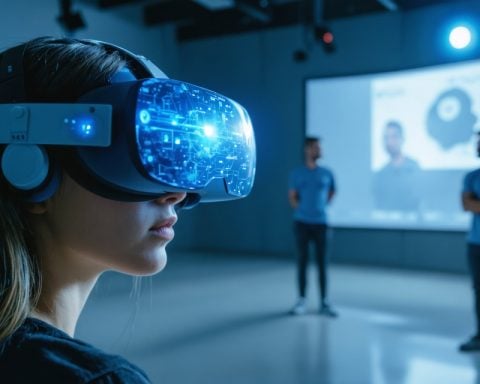Kyivstar, Ukraine’s premier mobile operator, has made headlines by teaming up with Elon Musk’s Starlink. This innovative collaboration aims to bring direct-to-cell satellite connectivity to Ukrainian smartphones, allowing users to communicate without relying on traditional cell tower infrastructure.
The agreement, announced by Kyivstar’s parent company VEON, is set to transform how connectivity is delivered in the region. The initial phase will roll out messaging services by late 2025, with voice and data capabilities following soon after. While specific financial details of this partnership remain under wraps, the implications for Ukraine are significant.
Starlink has been instrumental in maintaining internet connectivity in Ukraine since the escalation of conflict there. With the recent advancements in satellite technology, the company has begun deploying satellites capable of direct-to-cell communication—a move first seen in countries like the United States, Japan, and New Zealand.
This groundbreaking initiative positions Ukraine as one of the first countries worldwide to implement direct-to-cell satellite technology in a conflict setting, potentially changing the landscape of emergency communications. Amid ongoing tensions, especially concerning Russia’s efforts to disrupt Starlink’s services, this partnership could provide a vital lifeline for connectivity in challenging circumstances.
As this technology develops, it will be interesting to see how it reshapes communication networks in Ukraine and beyond. Stay tuned for further developments on this compelling story.
Revolutionizing Communication: Kyivstar and Starlink’s Game-Changing Partnership
Introduction
Kyivstar, the leading mobile operator in Ukraine, has forged a groundbreaking partnership with Elon Musk’s Starlink, aiming to deliver direct-to-cell satellite connectivity to smartphones across the country. This innovative collaboration is set to transform connectivity and communication for Ukrainians amidst ongoing geopolitical tensions.
Features of the Partnership
– Direct-to-Cell Connectivity: The foremost feature of this collaboration is the introduction of messaging services by late 2025, followed by voice and data services. Users will be able to send messages and conduct calls without the need for conventional cell tower infrastructure.
– Satellite Technology: Starlink’s deployment of direct-to-cell communication satellites promises to significantly enhance the reliability and accessibility of mobile communications, especially in areas where terrestrial networks are compromised.
– Emergency Communications: The initiative positions Ukraine at the forefront of adopting this technology in a conflict zone, potentially revolutionizing how emergency communications are handled in crisis situations.
Use Cases and Applications
1. Emergency Response: With reliable communication during emergencies, responders can coordinate more effectively in times of crisis.
2. Rural Connectivity: This technology can bridge the connectivity gap in rural areas where traditional cellular services are limited or unavailable.
3. Disaster Recovery: In the aftermath of natural disasters, quick restoration of communication services can facilitate rescue and recovery operations.
Pros and Cons
Pros:
– Enhanced communication reliability in conflict zones.
– Potential for improved access to information and services for remote communities.
– Independence from terrestrial networks which are vulnerable to disruptions.
Cons:
– High initial costs associated with satellite deployment.
– Dependence on satellite technology may lead to issues in adverse weather conditions.
– Potential regulatory hurdles in implementing satellite services.
Market Analysis and Trends
As Ukraine seeks to bolster its technological infrastructure amid ongoing conflicts, the partnership between Kyivstar and Starlink signals a trend toward more resilient communication systems worldwide. The growing demand for satellite communication solutions is anticipated as more nations recognize the vulnerabilities of traditional communications networks, especially in politically unstable regions.
Innovations in Satellite Technology
The advancements in satellite technology represented by the Starlink initiative are indicative of broader trends in the telecommunications industry. Direct-to-cell communication may soon become a standard feature in mobile connectivity, further reducing reliance on ground-based infrastructure.
Pricing and Compatibility
While specific pricing details have yet to be disclosed, the introduction of satellite-based services often comes with a premium due to the costs involved in satellite deployment and maintenance. As for compatibility, most modern smartphones are expected to support this technology, but users may need to check for updates from their device manufacturers to ensure seamless connectivity.
Conclusion
In summary, the partnership between Kyivstar and Starlink is set to significantly enhance mobile communication capabilities in Ukraine. As the technology evolves, it may serve as a model for other regions facing similar challenges. The implications of this initiative extend beyond mere connectivity; it represents a commitment to maintaining communication integrity even in the direst circumstances.
Stay updated on this significant development in telecommunications by visiting Kyivstar.



















